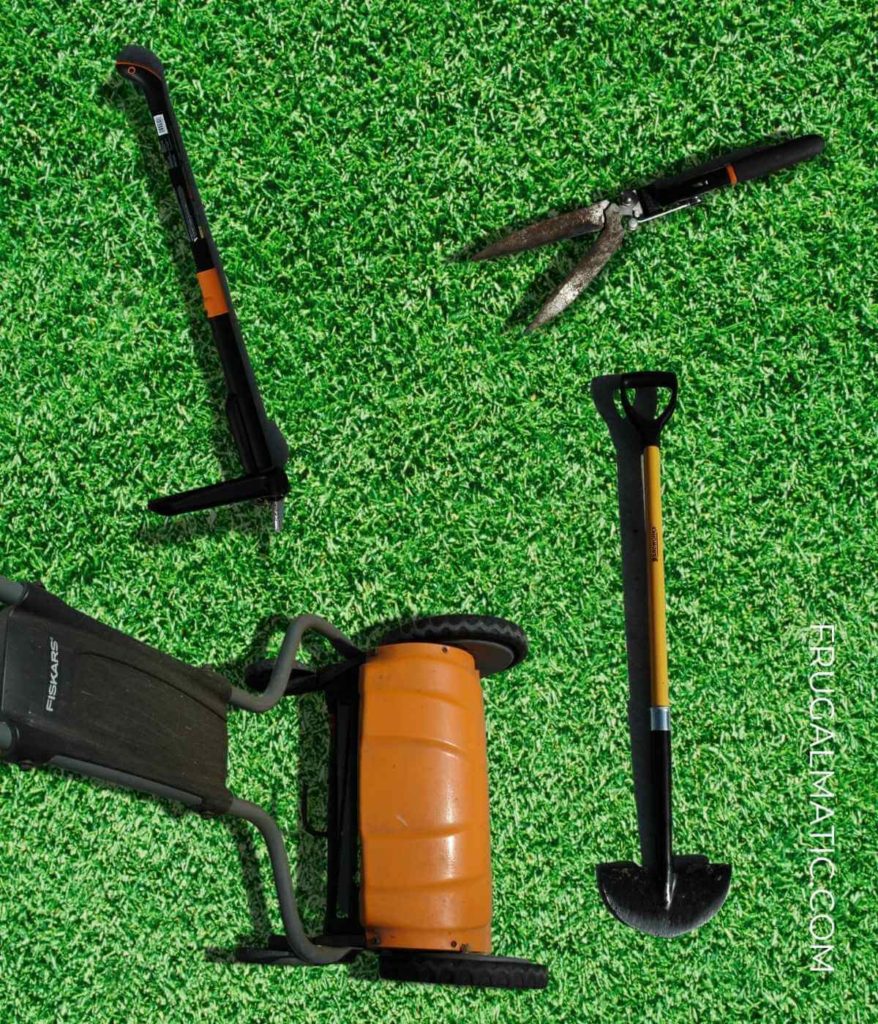This post was last updated on August 11th, 2022 at 11:19 am
The grass is finally starting to turn green despite a cold spring, and I’ve been itching to do some yard work. It’s still too soon to do much in the garden, and so I’ve been tackling tasks well suited for early spring. I find yard work to be almost therapeutic, and it recently left me thinking about the tools I’ve been using and why I enjoy them: They keep me moving. In this post, I highlight four hand tools that can both help beautify your yard and complement your active lifestyle.
The Fiskars Stand-up Weeder
I discovered this tool through my mom, who learned about it from a neighbor whose yard had no dandelions. It’s also one of the few yard tools that our kids enjoy helping me use. The Fiskars Stand-up Weed Puller allows you to yank weeds without having to sit on the ground. It features four claws that you push with your foot into the soil. The force of lifting the claws also closes them around the targeted weed. To open the claws and eject the weed, you push down on a lever. And repeat. (Important: You must center the claws over the root of the weed to remove the whole weed.)
At $39, the Fiskars Stand-up Weeder might not feel like a bargain, but it’s worth the price for a couple reasons. For one, being able to stand as you pull weeds allows you to cover more ground than you might with a hand-held weeder. Second, it’s kind of fun to use. You could justify the expense under your recreation budget.
There are a couple downsides. The claws often pull up soil with the weeds, leaving behind holes that require filling. Another problem is it doesn’t always remove the entire root, which could allow certain weeds to return later.
Some online reviews have complained about the tool feeling “flimsy” because of the many plastic parts. It is lighter than you might suspect, but it feels sturdy to me. I make sure to only use as much force on the tool as is necessary to remove a weed.
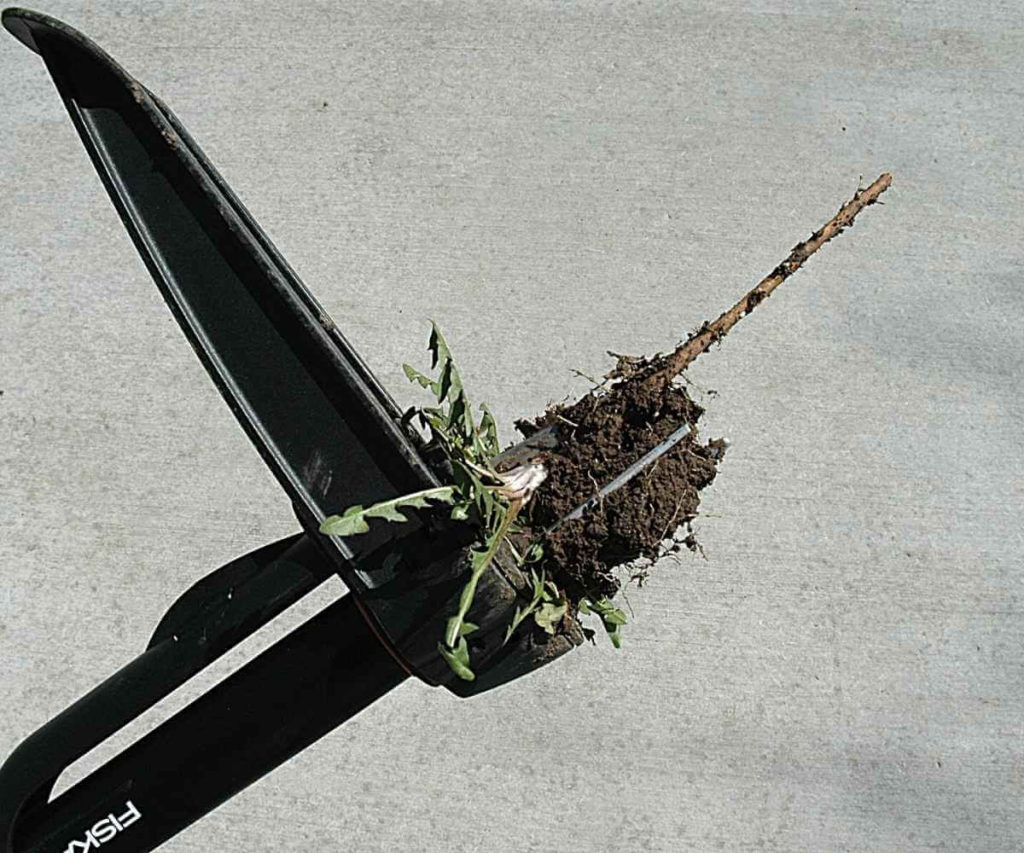
What this tool can replace: herbicides
I’m not a big herbicide fan, though I do use Roundup to kill weeds in hard-to-reach spaces, such as the cracks between sidewalks. You’re not going to enlist the Fiskars Stand-up Weed Puller to remove dandelions from a field, but it’s effective for an average-sized city lot.
Manual lawn edger
A couple years ago, I noticed the lawn creeping farther onto the sidewalk and decided I needed to edge it. Rather than buy or rent a noisy power edger and finish the project in a day or so, I opted to stretch out the project over a couple weeks with a manual edger.
I won’t call edging “fun,” but it provides its own form of satisfaction. With this tool, your measure progress in inches, as you must lift and drop a steel blade to slice parts of the lawn covering the sidewalk’s edge. We live on a corner lot, so we’re responsible for sidewalk on two sides of our yard. In terms of a workout, edging is more strenuous than weeding because of the force required to cut off the lawn pieces.
There are two kinds of manual edgers: the single-blade type like I used and a rotary version that you push back and forth along the sidewalk edge. The rotary version is adequate if all you’re doing is cutting through grass. But to cut through soil like I needed to do (because the grass had grown so far over the edge of our sidewalk), I recommend the single-blade type.
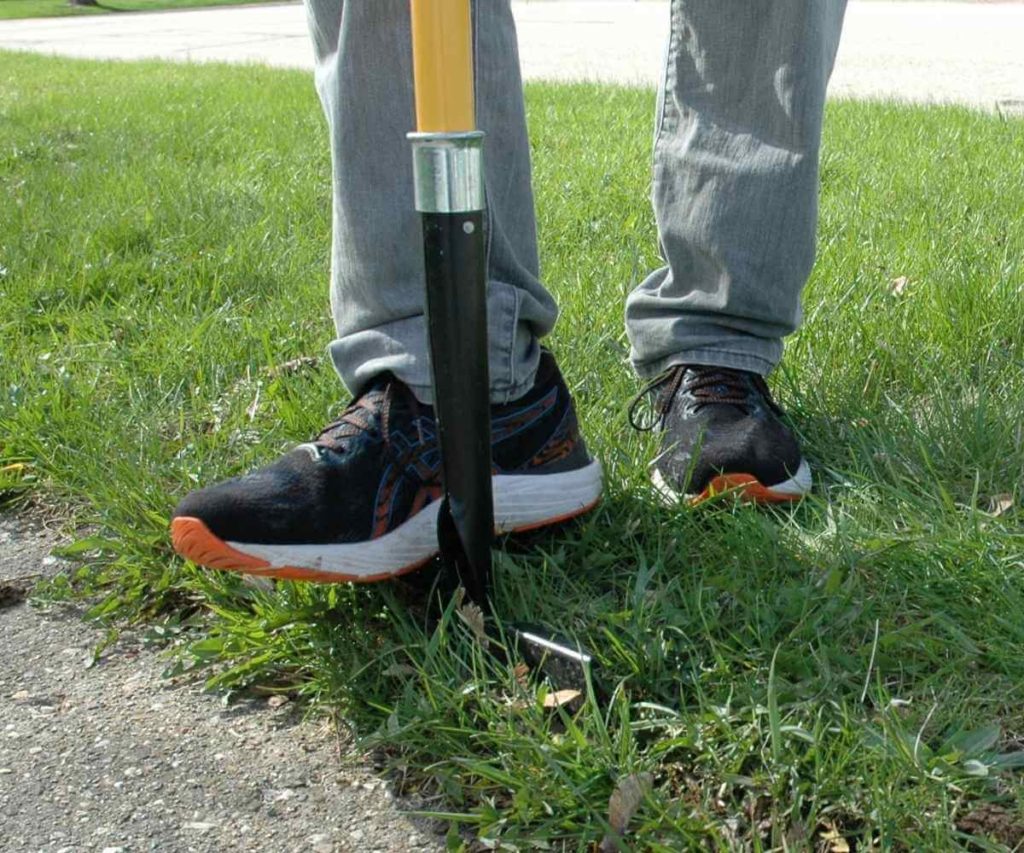
What this tool can replace: power edger
An underappreciated benefit of hand tools is they often take up significantly less storage space than their powered counterparts. Because I only edge the sidewalk every couple years, I don’t like the idea of a big, clunky power edger hogging valuable garage storage space. My manual edger takes up no floor space, as it simply hangs on a wall hook. Plus, I appreciate the quiet that the manual edger offers versus the non-stop rumble of a power edger, especially the gas-powered ones.
Read: For a better workout, put down the leaf blower
Hand trimmer
For many years, I thought the only practical way to trim grass around trees and other places that a lawn mower cannot reach is with a string trimmer. Don’t get me wrong: I think the string is incredibly clever and the inventor, George Ballas, deserves credit. In fact, I use my string trimmer a fair amount. However, for small jobs and touch-ups, a hand-held trimmer works perfectly fine.
Over the past few years, I’ve looked for more opportunities in our yard to use the hand trimmer. I like how it gives your hands a workout, especially if you make a point of switching back and forth from your left to right hand. One health issue to consider is that people’s grip weakens as they age, and a hand trimmer will force you to exercise that grip.
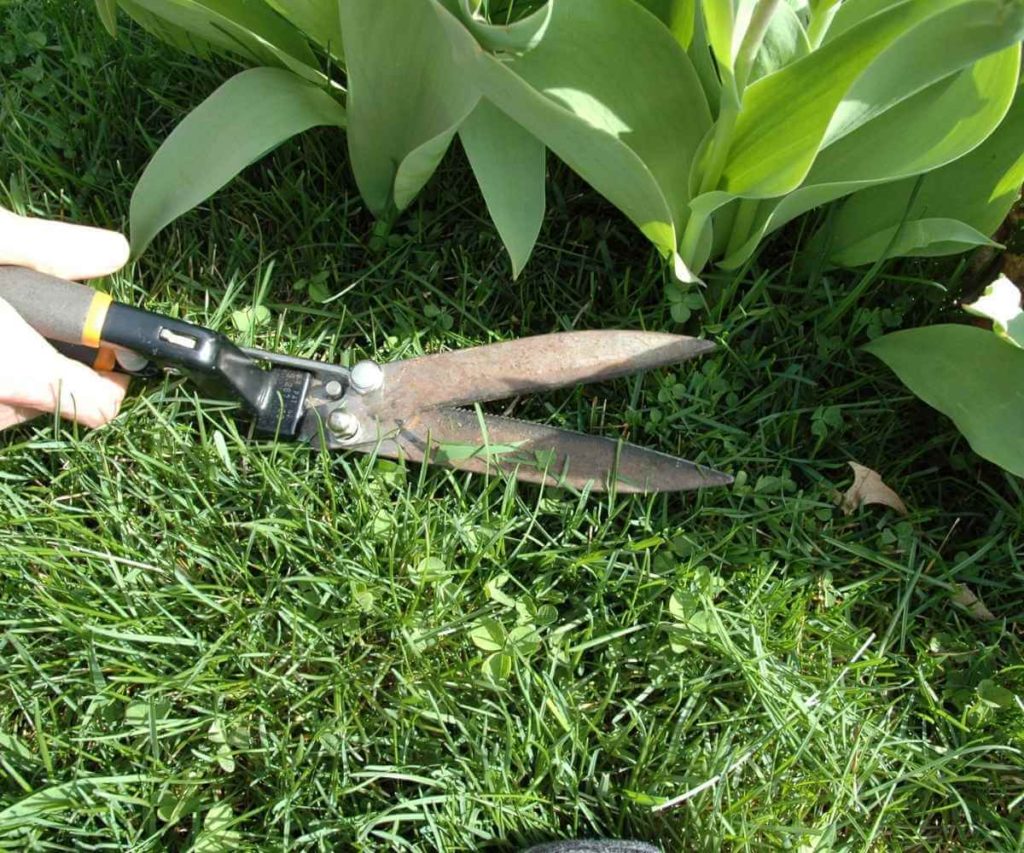
What this tool can replace: string trimmer
I still use our string trimmer along the perimeter of our property, such as near curbs and hedges. It is a versatile tool and takes up relatively little storage space. However, a hand trimmer can be useful to accomplish small jobs, especially around plants that you don’t want to risk damaging with a string trimmer.
Reel lawn mower
Lawn mowing gets a bad rap, especially among people who say it harms pollinators. Recently, communities have been promoting the No Mow May movement to encourage people to hold off moving in early spring to give weeds a chance to bloom for bees, in particular. I get it. But here’s the thing about push mowers: They’re great pieces of exercise equipment. According to my fitness tracker, I get more steps on days that I mow the lawn than almost any other day of the week.
And the beauty of mowing is that the growing grass forces you to mow! There’s no need to muster your willpower. For me, the fear of being shamed by neighbors is enough to motivate me to mow.
But I will say that reel mowers aren’t for everyone. I used a Fiskars reel mower for about two years, but I couldn’t keep up with our growing grass. Ultimately, I switched to a power push mower, which still requires a lot of walking back and forth across the lawn.
In my opinion, reel mowers are best suited for smaller lawns, not corner lots like mine. A downside of reel mowers is that they don’t cut well tall grasses and dandelions. When vegetation reaches a certain height, the spinning reels roll harmlessly over it.
For a reel mower to be effective, you have to be diligent about mowing before the grass gets too long. And that can be tricky, especially if you can’t mow for a prolonged period because of weather or other reasons.
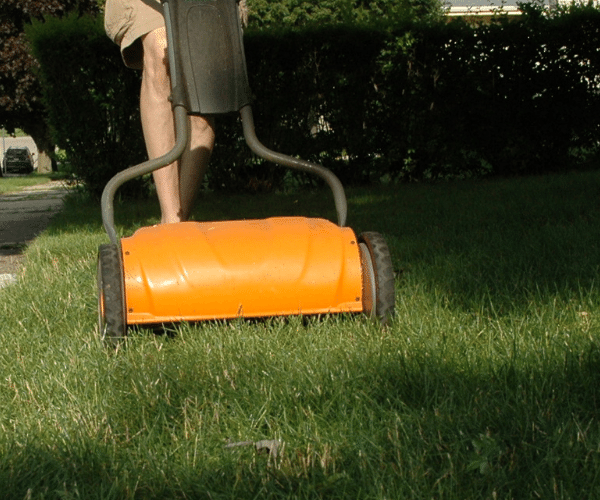
What this tool can replace: Power mowers
Reel mowers have amazing workout potential, in my opinion. That being said, a power push mower isn’t a bad choice, either. With both tools, you’ll do a lot of walking. The key is to pick the appropriate mower based on your physical capabilities and lawn size. The smaller the lawn, the more practical the reel mower becomes.
Exercise machines in disguise
My frugalmatic philosophy is to find ways to add movement to my day while accomplishing something tangible, meaning I like tools that are exercise machines in disguise. If you’re not in a huge hurry and have the physical ability to manage them, the four tools listed in this post might help you stay physically active. Do you have any more ideas? Please add them in the comment section below!

